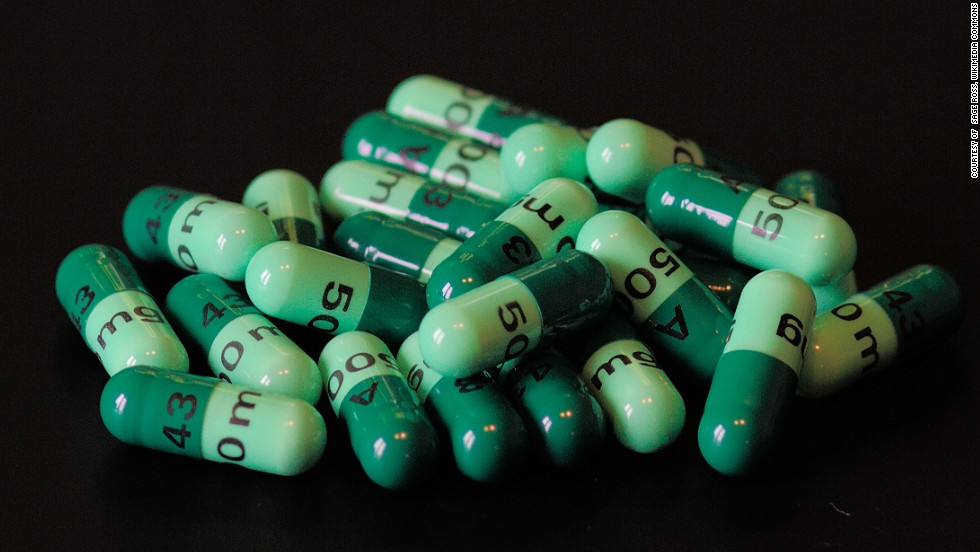Story highlights
- Superbugs could kill one person every three seconds by 2050
- A solution is within reach if drug developers, politicians, researchers and the public act now
(CNN)Superbugs could kill one person every three seconds by 2050, the equivalent of 10 million people a year, according to the final report last week from the Review on Antimicrobial Resistance, established in 2014 to keep the world from being "cast back into the dark ages of medicine."
The authors highlight the increasing burden of resistance and call for greater awareness of the problem, including the need for public campaigns beginning as soon as this summer.
The impact of superbugs
Superbugs are bacteria that are resistant to the antimicrobial drugs typically used to kill them. They are estimated to cause 700,000 deaths every year.
If no action is taken, these numbers are expected to rise dramatically, causing more deaths than cancer by 2050. This would mean common procedures such as giving birth, treating wounds and undergoing surgery could become fatal due to a lack of effective antibiotics.
But experts, including review Chairman Lord Jim O'Neill, believe that a solution is within grasp if certain actions are taken. "[My review] sets out a workable blueprint for bold, global action to tackle this challenge," O'Neill said.
Several causes underlying the emergence of resistance have been highlighted in the report, along with 10 areas in which to take action, including a massive global awareness campaign to reduce demand for, and prescription of, antibiotics, better global surveillance of resistance, funds for more research into new antimicrobials, and building a global coalition through the G20 and United Nations.
How concerned should we be?
The projected numbers are enough to enlist panic among people fearing a future where now-treatable conditions cannot be cured, but attention should be focused on pushing for solutions, according to experts.
"It has to be a big concern," said Ghada Zoubiane, program manager for infection at the Medical Research Council in the UK. "It's a silent problem that hasn't hit us in the face yet."
She stresses the long time frames involved in developing new antimicrobials and therefore the need to have begun acting already.
The drug industry has not invested much time or money in the development of antimicrobials because of the low returns they would get as their products sit in pharmacies for use mainly in emergencies when standard drugs aren't effective.
Zoubiane leads a cross-council initiative on tackling antimicrobial resistance, which launched in 2014 and committed ┬Ż30 million to fund research into the problem. She agrees with the report's recommendations, including the need to learn more. "We need to look at how to fill in our gaps in our knowledge," she said.
This is what her initiative is aiming to do, through a holistic approach funding work in new drug development, greater insight into why bacteria become resistant, the result of resistance in the real world and understanding of how behaviors can be changed.
What is being done?
Her Medical Research Council initiative is funding research spanning these areas. Among that is work by scientists at the University of Bristol who are looking for new sources of drug compounds in fungi. Also, researchers at the University of Leeds are working on technologies for use by family clinicians, or general practitioners, to easily diagnose whether an infection is viral or bacterial. And research at the University of Sheffield is exploring ways to boost our immune systems so they can kill bacteria at an early stage, removing the need for drugs.
The need for family physicians to better diagnose infections and reduce the number of antibiotics prescribed has been a key part of the resistance debate. According to the National Institute for Health and Care Excellence, more than 10 million antibiotics prescribed in England each year are unnecessarily given for illnesses such as colds.
"We need to think about the [general practitioner] perspective as well. It's not just about new antibiotics," Zhoubiane said. "They need technology to say if something is bacterial."
She believes better awareness among general practitioners could provide quick impact while longer-term solutions are developed. "This would be a quick win, and it wouldn't take long to see impact."
But some experts feel that too much attention is being given to this part of the issue.
"Most antibiotics are used in hospitals," said Brendan Wren, professor of microbial pathology at the London School of Hygiene and Tropical Medicine. "There's too much weight placed on GPs. It should be reduced, but the truth is that antibiotics [use is] widespread in the environment."
Wren also highlights countries where the use of antibiotics is not controlled and drugs can be bought over the counter. He has been monitoring the spread of resistance for 18 years and has seen the problem become worse as clinicians are no longer able to use certain antibiotics to treat their patients. "We shouldn't panic, but the front line of clinicians at hospitals are shocked at how quickly this has arisen in recent years."
Wren's team is working on developing alternatives to antibiotics on the premise that prevention is better than cure.
"There's too much emphasis on new drugs as bacteria can become resistant again," Wren said.
His group is also working to develop vaccines against a range of currently resistant bacteria, including hospital superbugs, MRSA and clostridium difficile. He is also working on ways to disable bacteria so they can no longer replicate, so they're less likely to become resistant, and on vaccines for use in animals, as these are likely to reach the market faster.
"The more of us working on these kinds of projects gives us multiple opportunities," he said. "If we can use less antibiotics and look for alternatives, then hopefully we can keep the problem in check."





















